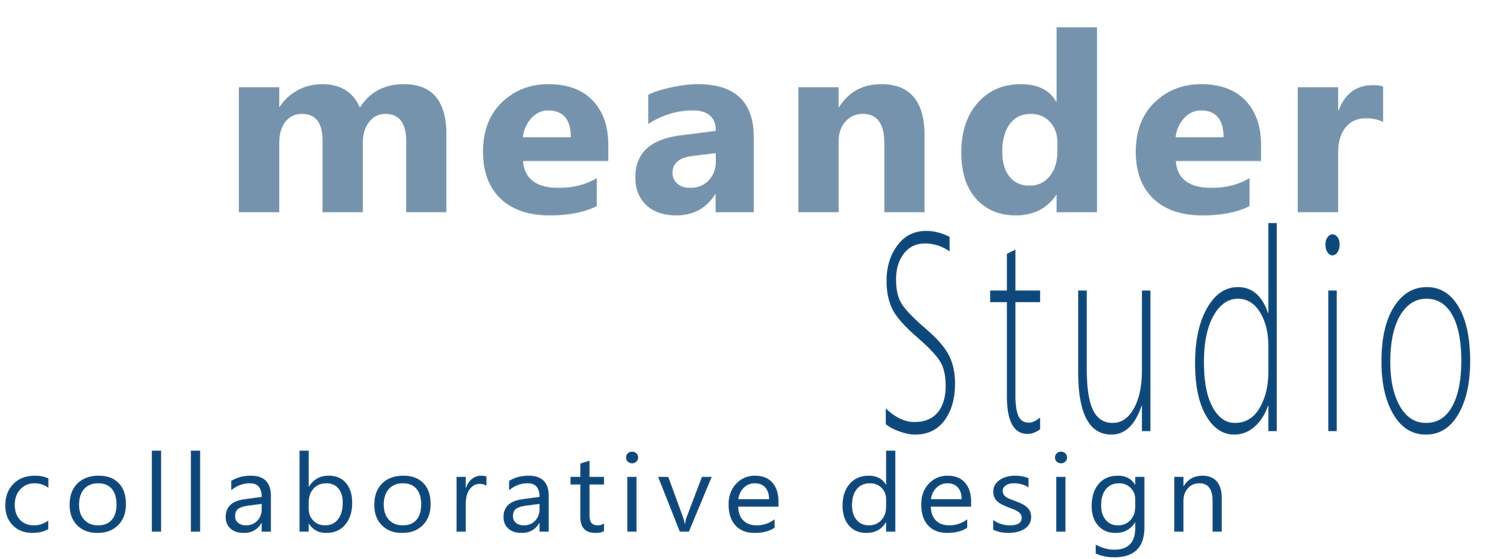Syllabus images above
We have been working collaboratively as teachers in the Distance M.Arch Program for almost a decade. In that time we have worked to create a pedagogy for the Thesis Program. Part of the this endeavor has been the development of a branding of Thesis within the school, surrounded around a notion of productive play.
The Thesis Curriculum in the Distance M.Arch program at the Boston Architectural Center spans three courses over three semesters: Thesis Prep, Thesis 1 and Thesis II. Our program is different from other M.Arch programs in that our virtual studio environment integrates aspects of traditional “face-to-face” studios, as well as some aspects of online programs. We have drawn heavily on the emerging body of knowledge that spans academic disciplines in regards to the mechanisms of online learning. In our curriculum, design becomes an ideal vehicle for testing, making and thinking online because it allows students to actively engage in learning that transforms the passive activities of reading or responding to digital content into a synthesized form that changes a student’s relationship to the academic content.
The pedagogy encapsulated by our thesis course has a dual emphasis: (1) on the physical act of making and (2) the more cerebral aspects of research and writing. There is nothing new to the mind/body dualism within architecture. However, distance learning requires that we constantly challenge students to test their ideas physically in order to engage and remain in dialogue with their advisers and peers. At the very core of our pedagogy is Making + Thinking = Dialogue.
The emphasis on making artifacts comes out of a direct need for students to create an individual process that is clearly anchored in material reality. By focusing on design, we push them to demonstrate in form making and therefore, ground and contextualize the spatial possibilities they imagine. Pointing to a model or drawing suddenly creates a realistic immediacy to the dialogue. The challenge is to carefully construct a series of sketch problems that elucidate the issues for students while opening the door to further research.
Making as an initial output of the conceptual idea is paramount to methods of inquiry. This is encouraged at many levels through a variety of modes: drawing, model and words. We recognize that there are different kinds of drawings and models that serve a variety of purposes. Diagrams can convey abstract or partially developed ideas and values, as well as having an analytic or interpretive purpose. Representations such as perspectives, collages or sketches can reveal many aspects of the qualities of space. Models that exhibit exquisiteness in quality of “craft in process” are favored over finely finished ones. In general, sectional spatial relationships are favored over plan or program development. Words and text have a specialized function within the pedagogy – they can be used as a supplement to drawings and models, because often, they fall short of being able to express the full intention of the designer. Therefore, text is used as a supplement to the process of making. It is intended that words can take a position of inquiry, annotation, argument or documentation – all important and crucial aspects within the thesis process. Modulation of these working methods are balanced through careful discussion with each individual student through the development of a series sketch problems and assignments.


















